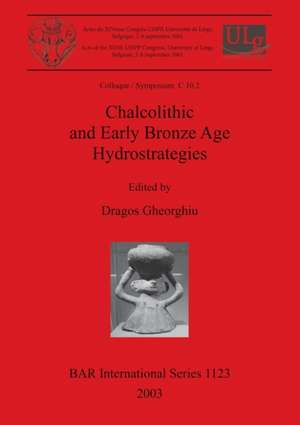Chalcolithic and Early Bronze Age Hydrostrategies
Editat de Dragos Gheorghiuen Limba Engleză Paperback – 15 iun 2003
Preț: 305.01 lei
Nou
Puncte Express: 458
Preț estimativ în valută:
58.37€ • 60.72$ • 48.19£
58.37€ • 60.72$ • 48.19£
Carte tipărită la comandă
Livrare economică 15-29 aprilie
Preluare comenzi: 021 569.72.76
Specificații
ISBN-13: 9781841714998
ISBN-10: 1841714992
Pagini: 94
Dimensiuni: 210 x 297 x 6 mm
Greutate: 0.39 kg
Editura: British Archaeological Reports Oxford Ltd
ISBN-10: 1841714992
Pagini: 94
Dimensiuni: 210 x 297 x 6 mm
Greutate: 0.39 kg
Editura: British Archaeological Reports Oxford Ltd
